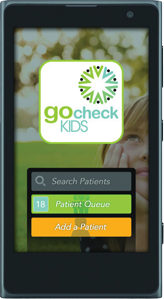 Gobiquity Mobile Health provides a mobile vision diagnostic solution that works through technology in a smartphone’s pre-existing hardware. That makes it both easy to understand and intuitive to adopt — as well as, CEO Andrew Burns points out, “cost-effective, since little investment is required.”
Gobiquity Mobile Health provides a mobile vision diagnostic solution that works through technology in a smartphone’s pre-existing hardware. That makes it both easy to understand and intuitive to adopt — as well as, CEO Andrew Burns points out, “cost-effective, since little investment is required.”
It’s a real-time measurement that uses a smartphone’s camera and flash. Wirelessly connected, Gobiquity does the analysis and sends the results back in one or two seconds. The company’s algorithm enables it to identify whether or not the patient has risk factors for “lazy eye,” including nearsightedness, farsightedness and eyes being unequal in strength. Burns says his goal is to help prevent blindness through early detection of these abnormalities.
“We give the information immediately — while the doctor is doing the exam,” Burns says. Emphasizing the efficiency this enables, he explains, “The doctor doesn’t have to stop the exam and wait a day. He’ll know right then if he needs to make a referral to an eye care professional.”
At the present time, healthcare providers need to use smartphones provided by Gobiquity with the application pre-loaded, but it is an app, and Burns says, “Eventually, we won’t need to provide the hardware.”
Burns recently relocated his company from California to Scottsdale’s Cure Corridor. Although a long-time Arizona resident, he emphasizes that is not the reason for the move as he is used to commuting throughout his career. “I’ve seen a transformation of technology capability in the Greater Phoenix area, specifically the Scottsdale tech corridor,” he says. “When we made the determination to move here from California, we saw the opportunity of market expertise and resources, such as a labor pool and the ecosystem that comes with it.” He notes specifically the interest in and industry support of mobile app development, product development, and the healthcare experience overall.
















Speak Your Mind
You must be logged in to post a comment.